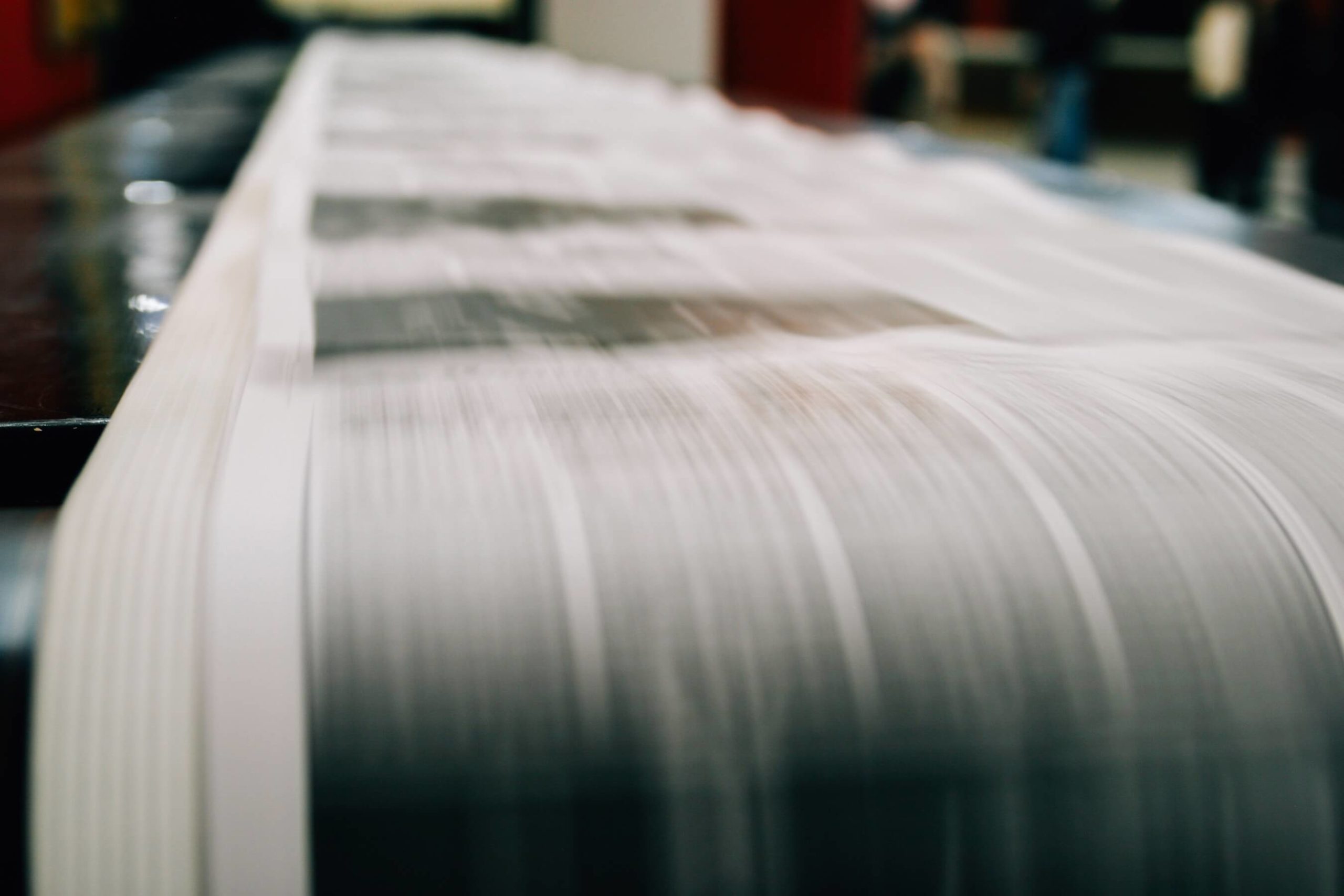A Start to Finish Breakdown of Direct Mail Printing
By Paul Bobnak | April 17, 2018

It’s been over 560 years since Gutenberg revolutionized printing with cast metal movable type. And although the last 50 of those years have seen rapid change in how ink is applied to paper and other substrates, the challenge remains the same: to mass-produce physical documents effectively and quickly.
Bringing life to your ideas (or those of your client) requires a process, one that has been altered and accelerated by technology of all kinds. To understand what’s involved and how you can make informed choices, we’ve put together this quick guide for some background.
The Design Stage
The best place to begin is by requesting a quote from a direct mail printer. You’ll want to provide some details about your campaign, including the intended number of pieces, size, etc.
You may already have artwork on hand for the printer to get started. If so, you’re ready for Pre-Flight (see below). You’ll just have to upload your files to your printer via FTP.
But if you’re starting from scratch, that quote is the foundation of a relationship between you and the printing company to create the best possible direct mail campaign that meets your requirements. Your designer, for example, even if they leave most of the work to the printer, must understand that there are differences between how branding and marketing appears in print vs. the web. They’ll also have to choose a print partner that knows all of the latest U.S. Postal Service design guidelines, both to get through the system as well as save money.
It’s also crucial to work with the printer as early as possible on the typography, page layout, and overall look and feel of the mailer. Art and file specifications like CMYK color separations and resolutions must be identical to avoid any delays later on in the process.
Preflight Stage
This is a highly detailed process that must be completed before uploading the job to be printed. The marketer needs to verify that all of the required files are present and correct, including data, fonts, image and graphic files. Page layout documentation, bleeds, margins, and color separations will also need to meet the client’s specifications.
Knowing the printer’s printer profile will ensure that PDFs are exported properly.
As another check that the necessary production requirements are being met, a printer can create proofs for sign-off from the customer. For color-critical or expensive jobs, a hard proof (on paper) can be run, while a soft proof (on a monitor) should be sufficient for other job files.
Printing Stage
A wide variety of technologies can be used in direct mail print; the two largest used for mail are offset and digital. Offset is still the most common and economical printing method, though recent changes in digital are increasing adoption of that technique.
Offset lithography is the transfer of inked copy and images from a plate (usually aluminum) to a rubber blanket, then to a sheet or roll of paper. Because it operates at a high rate of speed, it works best when printing large quantities of printed materials, like direct mail. Generally, because it permeates the paper, it provides superior color reproduction and crispness.
Digital printing, via laser printer or inkjet, deposits a thin layer of toner or ink on the surface of the substrate. It is ideal for small print jobs, including ones requiring variable data and images, because new plates do not need to be created. This also makes it ideal for projects requiring a quick turnaround.
Finishing Stage
Print jobs, such as direct mail campaigns, can be “finished” with a variety of processes either before or after they come off the press. Some of these are necessary to complete the function and design of the piece, such as cutting and trimming excess paper, or scoring and folding, which reduces the physical dimensions of a piece for insertion in an envelope or sealing.
Other finishing services are intended to add value and sensory appeal. Using UV or aqueous coating protects the ink and paper as well as improves its appearance. Embossing presses an image to the paper for a 3-D raised surface effect, while foil stamping uses a heated die to press foil against the paper to reflect light or create a glow.
Wrapping it up
- Research and contact printing vendors with decades of experience and up-to-date expertise and has 8 direct mail printing qualities.
- Direct mail printing companies and marketers need to be on the exact same page when it comes to the direct mail art file. An experienced provider will be well-versed in specific guidelines for artwork to ensure a smooth process.
- Make sure that your print vendor understands the crucial role played by data and technology at every stage of the production process.


